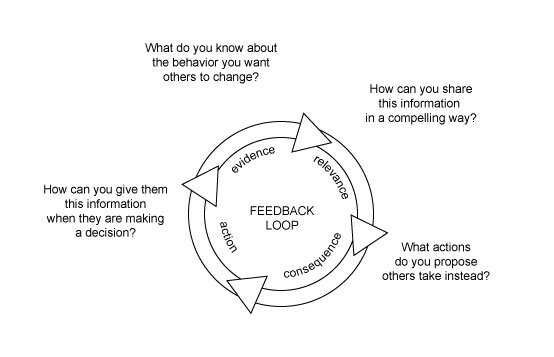Using Visuals to Support Your Writing Process
A recent post illustrated how to Use Visual Maps to Organize Your Ideas. Thanks to this guest post from Lydia Hooper, we can learn more ways to use visual expression to complement our writing. Researchers across academic disciplines are well trained in using writing to develop and convey their insights, but only some learn how visuals can help them organize and communicate their ideas. It’s well worth learning what you can, because visuals have the unique ability to help us:
Develop ideas and understand experiences that language can not yet describe
Gather and analyze complex and/or abstract ideas in simple, immediate ways
Communicate across language, knowledge, ideological, and other barriers
Impact decision-making, which largely happens in our pre-lingual, pre-rational brains
feedback loop
The best visuals balance the use of thoughtful images and words, and the best writing balances thorough explanation and visualization. Writers that use visuals to describe their ideas help their readers better understand the frameworks of thinking that inform what the writer is seeking to convey, and they make it easier for readers to share those ideas with others.The most effective way to incorporate visuals into your writings is to start using them at the beginning of your writing process.Here are some tips for using visuals throughout your process to help both you and your readers better understand your writing:Imagining
Photos and videos are great for documenting people, places, and things that inspire you. In fact, if you're not sure what does inspire you, you might take a look at the photos you've recently taken.
Simple drawings, for example of maps or flowcharts, and/or collages can help you play with ideas. See if you can suspend judgement about whether your creations look like you want them to and instead focus on having fun and seeing what arises.
Drawings generated from group conversations, also known as graphic recordings, are great for capturing and reflecting on not just your own ideas but the ideas of your colleagues or counterparts. Since academic writing is largely a dialogue about what's already been written and what could be, and since thinking itself is largely a social activity, this type of visual can be incredibly clarifying and empowering.
Organizing and Focusing
A great way to begin synthesizing ideas is to write them on sticky notes and experiment arranging them on a desk or wall surface.
Diagrams are great for organizing ideas. Some worth considering using are mind maps, brace maps, circle maps, Venn diagrams, 2x2 matrices.
When you are ready to start focusing and begin writing, you can create timelines, Gantt charts, and/or PERT charts to plan your production process in a way that can also hold you accountable.
Sharing, Publishing and Presenting
Graphics are excellent for supporting ideas in proposals, articles, reports, and books. Unlike your writing, which may be incredibly thorough, graphics need to be as simple as possible to be understood very quickly. Plan to take as much or even more time developing these as you do your writing.
Don't forget to also use these graphics to share ideas more widely, for example on social media or websites and in emails or presentation slides. Be sure to ask others what your visuals mean to them so you can revise them just as you would your writing.
Photos and videos are great ways to personalize your work and make it more approachable for wider audiences. For example, you can take photos or videos of yourself conducting research, making it through pivotal benchmarks in your writing process, and getting published to share your process and build a following online.
Lydia Hooper specializes in helping organizations collaborate and communicate about complex topics. She has partnered with more than 50 organizations and networks, offering services and trainings in data storytelling, graphic recording, and communications strategy. You can read more blog articles and get a free copy of her ebook “Using Visuals to Support Collaborative Work” atwww.fountainvisualcommunications.com.

